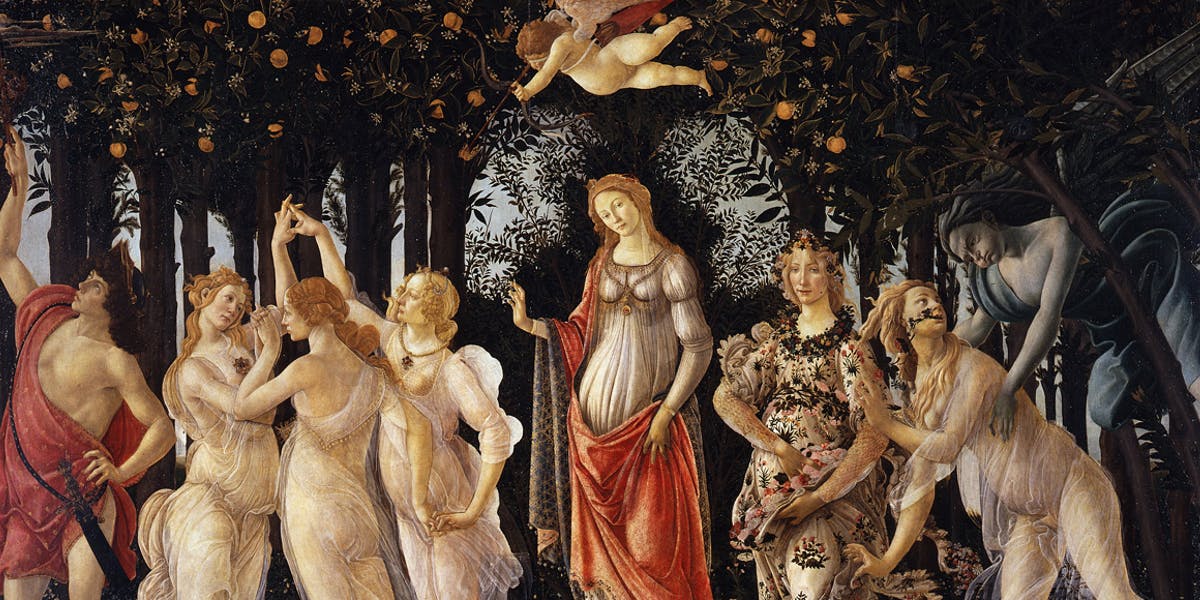Before Florence and the Renaissance revolutionized art, it was very different… Pre-Renaissance, art was much darker. Darker colors can be seen across almost all of the paintings from this time period, focusing mostly on darker reds and blues. The only real lightness to these paintings comes from the shiny gold paint used to accent holy figures. That leads us into the second part, Pre-Renissance art was almost entirely religious based, focusing on a few holy figures at the forefront of these paintings. Also, there wasn’t much detail put into these paintings, most of them were very shallow and void of little details seen in later paintings. This was especially seen in faces where they tended to look more like a child’s drawing in my opinion. Finally, Pre-Renissance art typically focused on darker topics such as plague, work, demons, or suffering.
When we look at Florence’s art, the stark contrast to the art of old is insane. The new art tended to be much brighter and have vibrant colors, the likes of which were never seen in dark-ages paintings. Bright greens and blues were adored in Florence. Scenes featuring nature were incredibly popular as artists loved contrasting the greens of the grass ands the trees to the vibrant blues and whites of the sky. The golds of the dark ages were mostly left out except when depicting holy figures or events
Next we look at the people in Florence’s art. Some of the figures were still based off of religion, but it wasn’t the main driving factor in art anymore. Not only that, but the detail that they put on the people was insanely higher than the paintings of old. Now, faces were incredibly detailed from the cheeks to facial symmetry, and eye colors. Also, the way people were depicted was new. Most new art no longer focused on one figure, rather multiple in one setting. Also, Florence’s art was much more liberal with their portrayal of nude figures. That would’ve been much more taboo Pre-Renissance.
Finally, we look at the artists themselves. Pre-Renissance artists weren’t widely known or associated with their works. That tended to go with the church they were associated with. However in Florence, artists were linked to their work and even became a sort of celebrity. Michelangelo was very well known along with Leonardo Davinci, Raphael, etc… These artists were adored and even revered for their works (such as Michelangelo for his work on the Sistine Chapel).
“The Middle Ages.” Illustration History, http://www.illustrationhistory.org/history/time-periods/the-middle-ages. Esaak, Shelley. “Why Was Florence the Center of Early Italian Renaissance Art?” ThoughtCo, ThoughtCo, 11 Apr. 2019, http://www.thoughtco.com/florance-as-center-of-renaissance-art-182381. Onion, Amanda. “Renaissance Art.” History.com, A&E Television Networks, 15 Oct. 2010, http://www.history.com/topics/renaissance/renaissance-art. Melon, Andrew W. “National Gallery of Art.” The Early Renaissance in Florence, http://www.nga.gov/features/slideshows/the-early-renaissance-in-florence.html.
